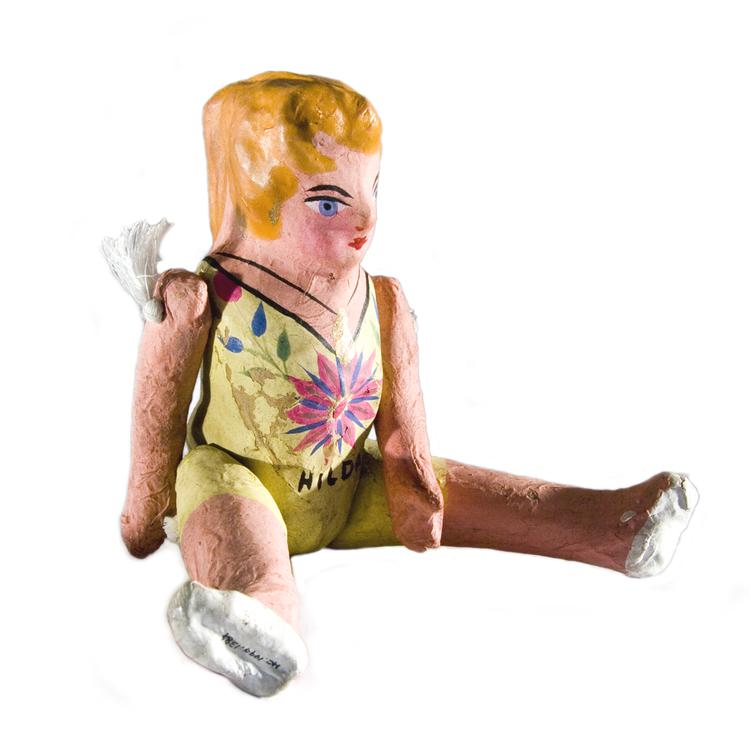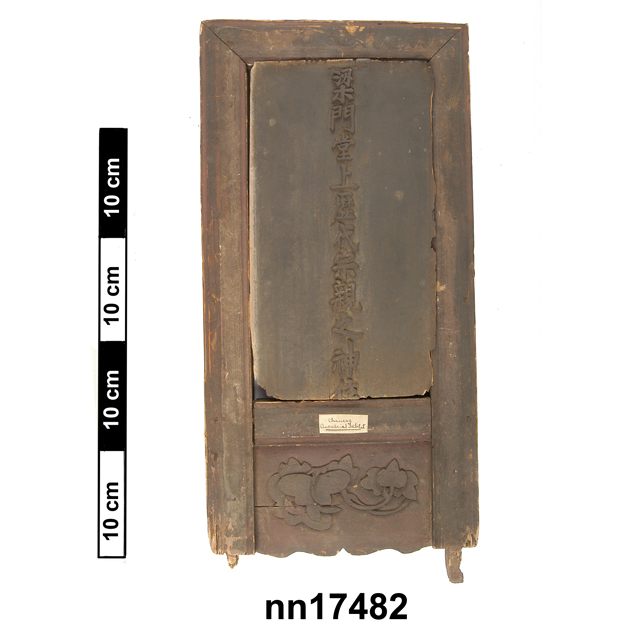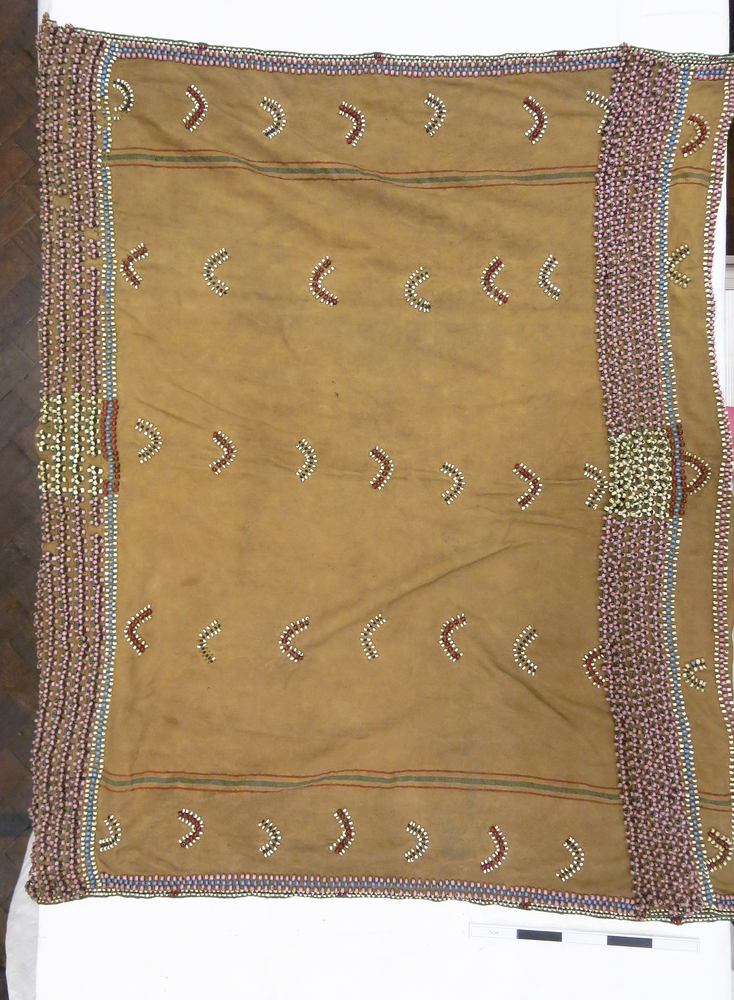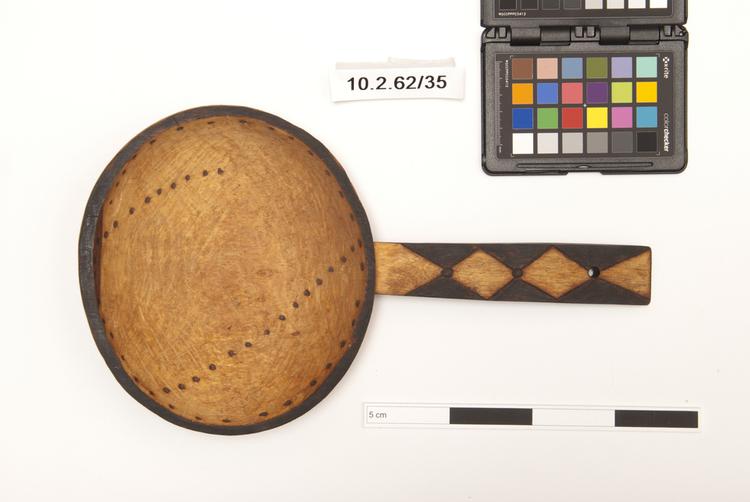
Papier-mâché doll with moving arms and legs. Wearing a painted yellow costume with a floral motif and the name 'Hilda'.
Dolls like this may be given as gifts, but not necessarily for children to play with as they are not very solid. They are examples of Mexican Folk Art. The production of papier-mache toys started in Mexico at the end of the eighteeneth century. Dolls with moveable arms and legs are made in folk workshops in Coyoacan. A mould made of wood or fired clay is prepared. Several layers of wet paper are pated around the mould and left to dry. The form is cut in 2, the mould remoced and the 2 halves are glued together, painted and varnished. How is it used? Because they are made from papier mache they are hollow and therefore will not last long if not handled carefully. They are bought as examples of Mexican Folk Art and just kept for decoration or as souvenirs. Who is it used by and why them? They are on sale all year round in shops that sell folk art, but more easily available during festival times when festival goers might buy them from street vendors. Some of course are bought by tourists, in places such as the Coyoacan suburb in Mexico City where there are many folk art workshops. Papier Mache is said to have taken its name from the French for ‘chewed paper’ because that is how, in the 17th century, French women prepared the paper used in this technique. It originated in China as early as the 3rd century BC, where it was used to make helmets, but did not reach Europe until the late 17th century. By the end of the 18th century it was in widespread use and it was at this time that it was introduced to Mexico, where it remains a popular artistic medium. It is not only used to make dolls but also animals, skeletons, toys, ornaments, carnival figures and masks. Papier mache objects are made all over Mexico but you can find good examples of these painted dolls being made by local artisans in the Coyoacan suburb of Mexico City. This is a bohemian, arty neighbourhood where you will also find the renowned National Museum of Popular Culture.
While these dolls may be given as gifts, they are not typically given to children to play with as since they are made from papier mache they are not particularly sturdy.






